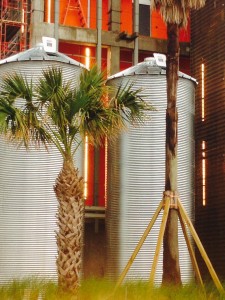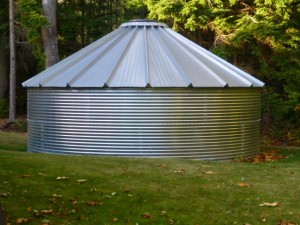 Both commercial and residential rainwater collection customers are expressing more interest than ever before, which is a large part of the reason that RainBank Rainwater Systems has seen a 50% bump in growth over the last year.
Both commercial and residential rainwater collection customers are expressing more interest than ever before, which is a large part of the reason that RainBank Rainwater Systems has seen a 50% bump in growth over the last year.
Architectural and engineering firms are including rainwater collection systems in their designs. Cities, and counties throughout the state are beginning to understand the connection between stormwater management and rainwater collection.
Developers are saving money on large water bills with rainwater collection, while complying with he “Green Storm water Infrastructure” (GSI). Green building and low impact development are becoming more popular with the general public. Residential customers, new construction and retrofits are recognizing the long-term cost savings, water quality, and security of a more decentralized water system. As a whole, the public is becoming more environmentally aware of our environmental impact and are finding ways to make that impact positive.
County and City planners, building departments, and health departments need to have the tools to make proper choices of acceptance, promotion, code and permitting of rainwater collection systems. RainBank’s president, Ken Blair is the American Rainwater Catchment Systems Association’s (ARCSA) Northwest regional representative and can schedule an ARCSA workshop for those civil departments, engineering and architectural firms this summer in Seattle. Interested parties please contact Ken using the contact form, or directly at Ken at RainBank dot info.



 The GSI mandate or “
The GSI mandate or “ Directing roof runoff for irrigation, toilets, laundry, or even pre-infiltration potable water, will reduce costs from municipal water supplies. During the rainy season, collected water can supply these uses while overflow from the cistern can be directed to infiltration. Irrigation in the summer months being supplied by the desired amount allocated from storage will enable the rain garden or infiltration system to be sized for a smaller amount of runoff while supplementing city water usage.
Directing roof runoff for irrigation, toilets, laundry, or even pre-infiltration potable water, will reduce costs from municipal water supplies. During the rainy season, collected water can supply these uses while overflow from the cistern can be directed to infiltration. Irrigation in the summer months being supplied by the desired amount allocated from storage will enable the rain garden or infiltration system to be sized for a smaller amount of runoff while supplementing city water usage.
